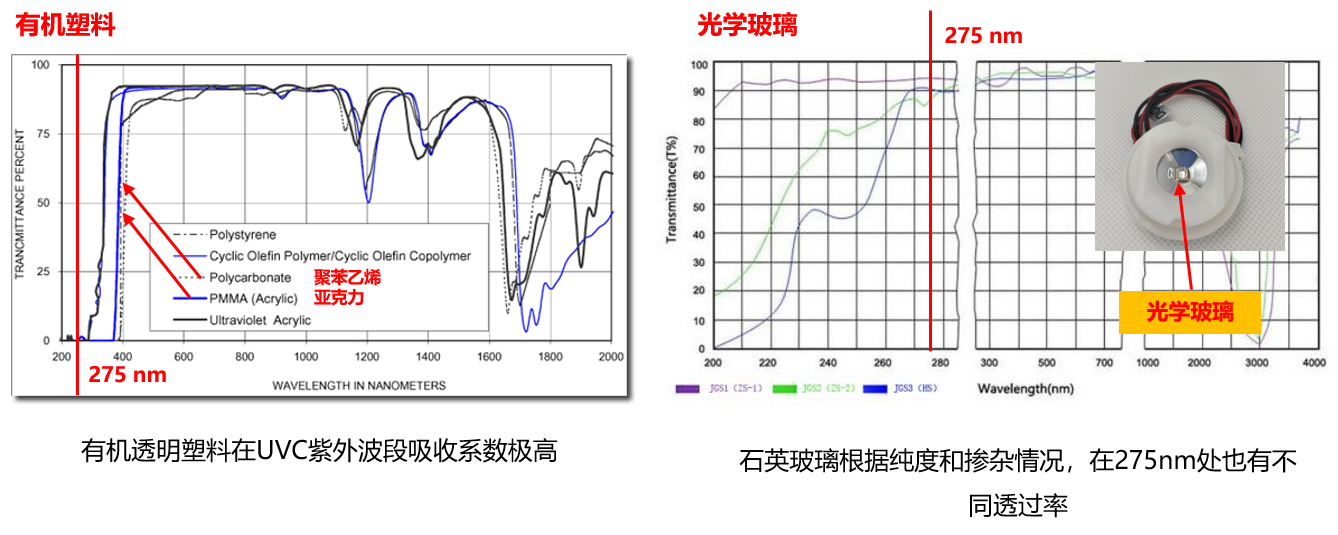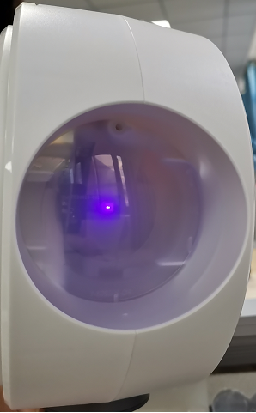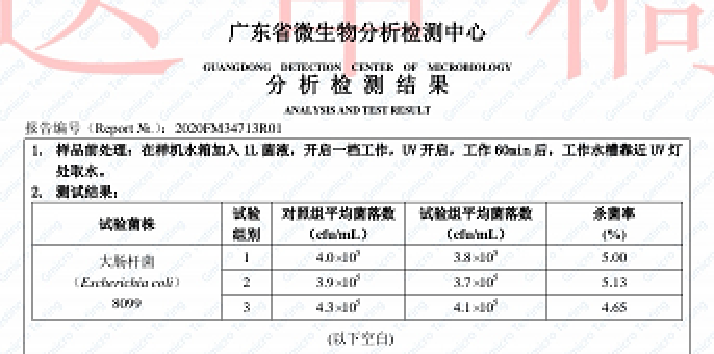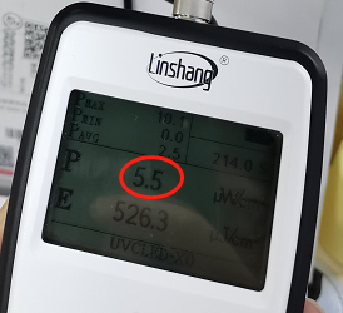
The customer mistakenly believed that transparent plastics commonly used in visible light scheme design, such as acrylic, could also be used as light windows for UVC-LED, resulting in zero sterilization effect. This situation is not uncommon. Borrowing the concept of bond energy, the absorption coefficients of C-H and C-O bonds in the UVC and UVB ultraviolet bands are very high, so very thin plastics can absorb almost all of the deep ultraviolet radiation. The absorption edge of ordinary polystyrene and acrylic is around 385nm, and the transmittance at 275nm is already equivalent to zero
What kind of material should be used to make the light window of deep ultraviolet LED? Sapphire is the substrate of deep ultraviolet LED and also the light-emitting surface of the chip, so it can be used as a light window, but the material and processing costs are high. There are many types of quartz, three of which are commonly found in optical glass, JGS123, Suggest using JGS2 specification quartz for 275nm UVC-LED, and JGS1 quartz or sapphire for 265nm or below LED. This also applies to the lens material used for packaging lamp beads
The following figure shows the report of the sterilization test conducted on the customer's product, with a very low sterilization rate


After receiving customer feedback, our FAE company first tested the optical power density of the customer's product using an optical power density meter, as shown in the figure

After testing, it was found that the optical power density was very low. Looking at the transparent light window, the customer used acrylic board, which resulted in a low sterilization rate. So what kind of material should be used to make the light window of deep ultraviolet LED? Sapphire is the substrate of deep ultraviolet LED and also the light-emitting surface of the chip, so it can be used as a light window, but the material and processing costs are high. There are many types of quartz, three of which are commonly found in optical glass, JGS1/JGS2/JGS3, Suggest using JGS2 specification quartz for 275nm UVC-LED, and JGS1 quartz or sapphire for 265nm or below LED